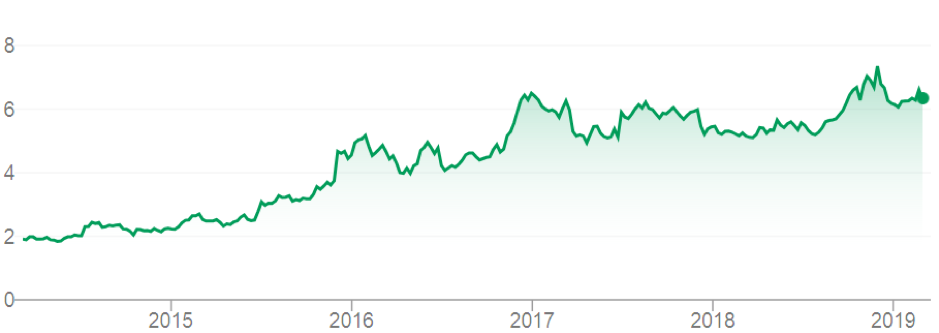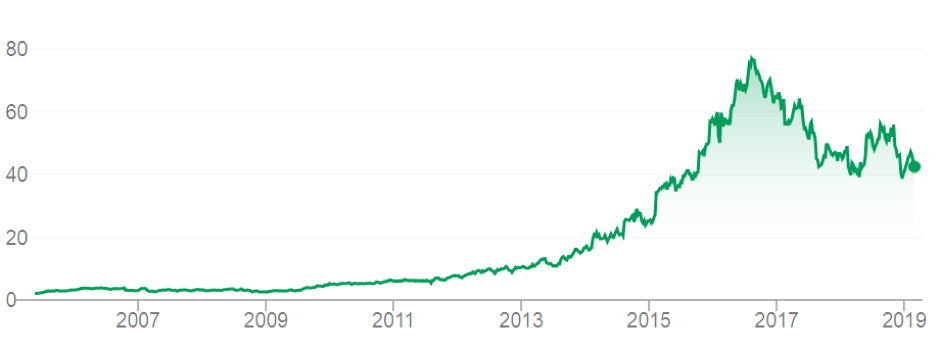Reserve Bank of Australia research on the link between falling house prices and spending – the “wealth effect” – has useful clues for investors in consumer-discretionary stocks.
RBA governor Philip Lowe this week said lower property prices would most effect spending on cars and household furniture. Consumers were unlikely to cut spending significantly on clothes, food, health and other services in response to falling asset values.
My take is that homeowners, faced with declining property prices and stagnant wages growth, are deferring big-ticket items so they can maintain spending on regular services. They would prefer to keep eating out, buying clothes and having holidays rather than buy or upgrade their car or couch.
As Lowe notes, low wages growth is probably a bigger driver of the wealth effect. Consumers who have not had a decent pay rise for years are downgrading their expectations of future income growth and thus wealth. Those expectations are influencing spending.
From an investment perspective, avoid retailers selling big-ticket items and favour those selling lower-cost services. Some automotive stocks look cheap but it’s too soon to buy given sharp falls in car sales. Beware building materials stocks that depend on the renovations market; deferring a bathroom or kitchen makeover is easier when incomes are pressured.
Also avoid providers of furniture and other large household items. Nick Scali is a great company and its latest profit result impressed. But the headwinds in its sector are strengthening as consumers struggle with high debt, low wages growth and falling property values.
Here are the fast-food stocks
This brings me to the market’s three largest fast-food stocks: Collins Food, Restaurant Brands NZ and Domino’s Pizza Enterprises. They can weather the retail malaise as consumers who are working longer hours and spending more time commuting to work, favour cheaper food options. And as others downgrade from mid-market food options to cheaper offerings.
I have written positively about Collins Food and Restaurant Brands NZ for The Switzer Report. Domino’s was avoided (I nominated it as a stock to sell in December 2016 at $66.48).
Collins has rallied from $5.17 when I last wrote about it in this Report in April 2017 to $6.28. Restaurant Brands NZ has also rallied in the past two years (on the NZX and now the ASX) and Domino’s trades at $42.55 and looks to be in value territory.
Chart 1: Collins Food

Source: ASX
My interest in the fast-food stocks was initially based on the mega-trend of people cooking less at home and eating out more or buying takeaway food. United States consumers now spend just over half of their food budget on eating out – more than they spend at grocery stores.
Australian households spent an average $95 a week on eating out and takeaways in 2018, according to Australian Bureau of Statistic data. We reportedly spent $2.6 billion last year on food and drink ordered through Uber, Menulog and other food-delivery platforms.
An increase in snacking is contributing to this trend. More than 90% of US consumers snack at least once a day, according to Nielsen research. A fifth snack three to four times daily. Fast-food companies are capitalising through “loose change” snack promotions that attract hungry kids after school who want their fix of fries and sugary drinks.
Taken together, there is the structural trend of people eating out more and having extra snacks, combined with the cyclical trend of consumers who are under financial pressure having to work longer hours, seek cheaper takeaway options and take solace in fast food.
That’s not to say a slowing economy, intense competition in fast food and the move towards healthier food will not affect the fast-food operators. But I can’t see the downturn in asset values having great impact on their operations.
Overseas growth
International expansion is another reason I favour fast-food stocks. Collins, owner of 229 KFC outlets in Australia, is expanding in Europe. The company has opened 17 stores in Germany and 18 in The Netherlands in the past few years and has big plans to grow in Europe, which currently has lower penetration of fried-chicken outlets than other developed markets.
Collins’ international operations are small in the scheme of its earnings but I like its lower-risk strategy to expand in Europe and diversify its earnings base. Several menu and service innovations, some of which cater to the snacking market, are being trialled in Europe.
Restaurant Brands, the subject of a takeover offer that its board has recommended to shareholders, has grown its Taco Bell and Pizza Hut operations in Hawaii. The quick-service restaurant has 61 KFC stores in Australia and 94 in New Zealand.
Domino’s is by far the largest and most internationalised of the fast-food stocks with operations in Japan, Germany, France, The Netherlands, Belgium, New Zealand and Australia. The pizza giant has just over 1,000 branded stores in Europe and its Japan business is performing well.
I prefer small and mid-cap companies that are building an international footprint, given the limited size of our market. Australians love their KFC but only so many stores can be opened before this market is saturated.
Home delivery
The boom in online food ordering and delivery is a new growth driver for Collins and Restaurant Brands. Domino’s has been a leader in fast-food technology and some analysts, erroneously in my view, described the company as a “technology play” at its valuation peak.
In its half-year results in November, Collins said 44 of its KFC stores now offered delivery services and were growing above expectations. The company planned to double its delivery footprint in six months using multiple aggregators such as the big online food-delivery platforms. Home delivery of KFC, not to everyone’s taste, is a huge growth opportunity.
I suspect KFC and other large fast-food operators will innovate their menus and pricing for the home-delivery market, targeting time-poor consumers who want to order a meal for their family for under $25, via their phone, and have it home delivered within 30 minutes.
Cynics will argue that burger, fried chicken and chips do not “travel well”, but that claim could be applied to most food delivered through the online ordering platforms. I suspect KFC’s lower price point and brand will have great appeal to younger consumers, particularly twentysomething men who have less than $10 to spend on dinner and avoid cooking.
Domino’s in value territory
After a difficult few years, Domino’s look interesting. The stock has fallen from a 52-week high of $57.80 to $42.55, having hit a low of $38.10. Once a market darling, Domino’s has been rocked by claims of wages underpayment and disappointing earnings in recent years.
The company’s interim FY19 earnings report, released mid-February, was broadly in line with market expectations at the net profit level, but earnings guidance was at the low end of its range. Same-store sales growth of 3.5 per cent in Australia was a touch softer than expected.
Domino’s international operations are its long-term upside. They contribute just over half of underlying earnings (EBITDA) and, excluding the French operations, are performing okay. High expected sales growth in Japan and Europe should offset slower growth in Australia and New Zealand.
Domino’s should benefit from greater economies of scale in its European operations with potential to more than double its outlets over the coming decade. Australia, too, has room for extra Domino’s stores but the trans-Tasman operations, contributing just under a third of Domino’s revenue, will be a smaller contributor proportionally as the offshore business grows.
At the current price, Domino’s is on a forward price-earnings (PE) multiple of about 21 times FY20 earnings, using consensus analyst estimates. Granted, Domino’s is unlikely to deliver the same growth rates it has in the past, but the PE is not overly demanding given the company’s capacity to deliver double-digit earnings growth and expand overseas.
An average share price target of $51.17, based on the consensus of 11 broking firms, suggests Domino’s is undervalued and offers a sufficient margin of safety.
The stock is not a screaming buy, but value is returning to Domino’s. From a charting perspective, the stock needs to hold support above $40 and consolidate after recent falls.
Chart 2: Domino’s Pizza Enterprises

Source: ASX
Tony Featherstone is a former managing editor of BRW, Shares and Personal Investor magazines. The information in this article should not be considered personal advice. It has been prepared without considering your objectives, financial situation or needs. Before acting on information in this article consider its appropriateness and accuracy, regarding your objectives, financial situation and needs. Do further research of your own and/or seek personal financial advice from a licensed adviser before making any financial or investment decisions based on this article. All prices and analysis at 6 March 2019.